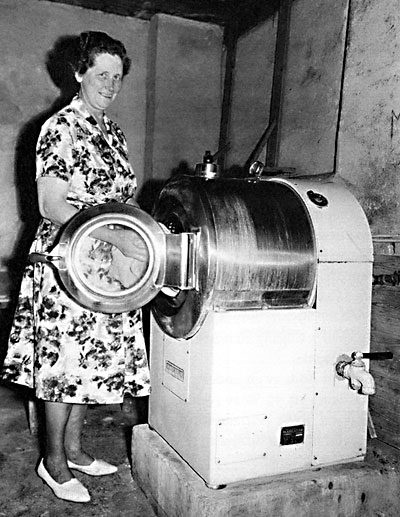|
Matchbox
A matchbox is a container or case for matches, made of paperboard, cardboard, thin wood, or metal, generally in the form of a box with a separate drawer sliding inside the cover. Matchboxes generally measure 5 x 3.5 x 1.5 cm, and commonly have coarse striking surfaces on the edges for lighting the matches. Cylindrical matchboxes with a round cover on one end are also available. For many applications matchbooks have replaced matchboxes. Metallic model There are metal matchboxes some of which also have a hollow cylinder in which a nitrated wick is housed so that it can ignite when it is windy. The metal boxes have a File (tool), scraper that is usually placed on the edge, in a slot made for this purpose. a sort of file that can be machined to the same metal casing or be a metal sheet, welded or glued. In 1878.the patent document, nº 2191 class 44, was registered by Hannoversche Gummi-Kamm-Compagnie in Hannover, about a metallic matchbox, with the following text: Other ty ... [...More Info...] [...Related Items...] OR: [Wikipedia] [Google] [Baidu] |
Match
A match is a tool for starting a fire. Typically, matches are made of small wooden sticks or stiff paper. One end is coated with a material that can be ignited by friction generated by striking the match against a suitable surface. Wooden matches are packaged in matchboxes, and paper matches are partially cut into rows and stapled into matchbooks. The coated end of a match, known as the match "head", consists of a bead of active ingredients and binder (material), binder, often colored for easier inspection. There are two main types of matches: safety matches, which can be struck only against a specially prepared surface, and strike-anywhere matches, for which any suitably frictional surface can be used. Etymology The word ''match'' derives from Old French ''mèche'', referring to the Candle wick, wick of a candle. Historically, the term ''match'' referred to lengths of rope, cord (later cambric) impregnated with chemicals, and allowed to burn continuously. These were used to li ... [...More Info...] [...Related Items...] OR: [Wikipedia] [Google] [Baidu] |
Matchbook
A matchbook is a small paperboard folder (known as a matchcover) enclosing a quantity of matches and having a coarse striking surface on the exterior. The folder is opened to access the matches, which are attached in a comb-like arrangement and must be torn away before use in contrast to a matchbox where the matches are loosely packed in the interior tray. The exterior of the matchcover is usually imprinted with a producer's logo, often with artistic decorations, or serves as an advertising/promotional medium for the undertaking by which it is sold or given away. The ease of making matchcovers of different shapes also made them quite a popular cheap promotional item or anniversary souvenir. Manufacturing of matchbooks peaked during the 1940s and 1950s, then steadily declined because of the availability of disposable lighters and various anti-smoking health campaigns. Recently, matchbooks have begun to regain some of their popularity as a "retro" advertising item, particul ... [...More Info...] [...Related Items...] OR: [Wikipedia] [Google] [Baidu] |
003 Welthölzer Anagoria
3 (three) is a number, numeral (linguistics), numeral and numerical digit, digit. It is the natural number following 2 and preceding 4, and is the smallest odd prime number and the only prime preceding a square number. It has religious and cultural significance in many societies. Evolution of the Arabic digit The use of three lines to denote the number 3 occurred in many writing systems, including some (like Roman and Chinese numerals) that are still in use. That was also the original representation of 3 in the Brahmic numerals, Brahmic (Indian) numerical notation, its earliest forms aligned vertically. However, during the Gupta Empire the sign was modified by the addition of a curve on each line. The Nāgarī script rotated the lines clockwise, so they appeared horizontally, and ended each line with a short downward stroke on the right. In cursive script, the three strokes were eventually connected to form a glyph resembling a with an additional stroke at the bottom: ३. ... [...More Info...] [...Related Items...] OR: [Wikipedia] [Google] [Baidu] |
Cardboard
Cardboard is a generic term for heavy paper-based products. Their construction can range from a thick paper known as paperboard to corrugated fiberboard, made of multiple plies of material. Natural cardboards can range from grey to light brown in color, depending on the specific product; dyes, pigments, printing, and coatings are available. The word ''cardboard'' has general use in English and French, but the term is deprecated in commerce and industry as not adequately defining a specific product. Material producers, container manufacturers, packaging engineers, and standards organizations, use more specific terminology. Usage statistics In 2020, the United States hit a record high in its yearly use of cardboard. Over 120 billion pieces were used that year, with around 80 percent of all the products sold in the United States being packaged in cardboard. In the same year, over 13,000 separate pieces of consumer cardboard packaging were thrown away by American households, co ... [...More Info...] [...Related Items...] OR: [Wikipedia] [Google] [Baidu] |
Home Appliances
A home appliance, also referred to as a domestic appliance, an electric appliance or a household appliance, is a machine which assists in household functions such as cooking, cleaning and food preservation. The domestic application attached to home appliance is tied to the definition of appliance as "an instrument or device designed for a particular use or function". ''Collins English Dictionary'' defines "home appliance" as: "devices or machines, usually electrical, that are in your home and which you use to do jobs such as cleaning or cooking". The broad usage allows for nearly any device intended for domestic use to be a home appliance, including consumer electronics as well as stoves, refrigerators, toasters and air conditioners. The development of self-contained electric and gas-powered appliances, an American innovation, emerged in the early 20th century. This evolution is linked to the decline of full-time domestic servants and desire to reduce household chores, allowing ... [...More Info...] [...Related Items...] OR: [Wikipedia] [Google] [Baidu] |
Collecting
The hobby of collecting includes seeking, locating, acquiring, organizing, cataloging, displaying, storing, and maintaining items that are of interest to an individual ''collector''. Collections differ in a wide variety of respects, most obviously in the nature and scope of the objects contained, but also in purpose, presentation, and so forth. The range of possible subjects for a collection is practically unlimited, and collectors have realised a vast number of these possibilities in practice, although some are much more popular than others. In collections of manufactured items, the objects may be antique or simply collectable. Antiques are collectable items at least 100 years old, while other collectables are arbitrarily recent. The word ''vintage'' describes relatively old collectables that are not yet antiques. Collecting is a childhood hobby for some people, but for others, it is a lifelong pursuit or something started in adulthood. Collectors who begin early in life oft ... [...More Info...] [...Related Items...] OR: [Wikipedia] [Google] [Baidu] |
Containers
A container is any receptacle or enclosure for holding a product used in storage, packaging, and transportation, including shipping. Things kept inside of a container are protected on several sides by being inside of its structure. The term is most frequently applied to devices made from materials that are durable and are often partly or completely rigid. A container can also be considered as a basic tool, consisting of any device creating a partially or fully enclosed space that can be used to contain, store, and transport objects or materials. History Humans have used containers for at least 100,000 years, and possibly for millions of years.Clive Gamble, ''Origins and Revolutions: Human Identity in Earliest Prehistory'' (2007), p. 204. The first containers were probably invented for storing food, allowing early humans to preserve more of their food for a longer time, to carry it more easily, and also to protect it from other animals. The development of food storage co ... [...More Info...] [...Related Items...] OR: [Wikipedia] [Google] [Baidu] |
Portugal
Portugal, officially the Portuguese Republic, is a country on the Iberian Peninsula in Southwestern Europe. Featuring Cabo da Roca, the westernmost point in continental Europe, Portugal borders Spain to its north and east, with which it shares Portugal-Spain border, the longest uninterrupted border in the European Union; to the south and the west is the North Atlantic Ocean; and to the west and southwest lie the Macaronesia, Macaronesian archipelagos of the Azores and Madeira, which are the two Autonomous Regions of Portugal, autonomous regions of Portugal. Lisbon is the Capital city, capital and List of largest cities in Portugal, largest city, followed by Porto, which is the only other Metropolitan areas in Portugal, metropolitan area. The western Iberian Peninsula has been continuously inhabited since Prehistoric Iberia, prehistoric times, with the earliest signs of Human settlement, settlement dating to 5500 BC. Celts, Celtic and List of the Pre-Roman peoples of the Iberia ... [...More Info...] [...Related Items...] OR: [Wikipedia] [Google] [Baidu] |
Guinness World Records
''Guinness World Records'', known from its inception in 1955 until 1999 as ''The Guinness Book of Records'' and in previous United States editions as ''The Guinness Book of World Records'', is a British reference book published annually, listing world records both of human achievements and the extremes of the natural world. Sir Hugh Beaver created the concept, and twin brothers Norris and Ross McWhirter co-founded the book in London in August 1955. The first edition topped the bestseller list in the United Kingdom by Christmas 1955. The following year the book was launched internationally, and as of the 2025 edition, it is now in its 70th year of publication, published in 100 countries and 40 languages, and maintains over 53,000 records in its database. The international franchise has extended beyond print to include television series and museums. The popularity of the franchise has resulted in ''Guinness World Records'' becoming the primary international source for cata ... [...More Info...] [...Related Items...] OR: [Wikipedia] [Google] [Baidu] |








